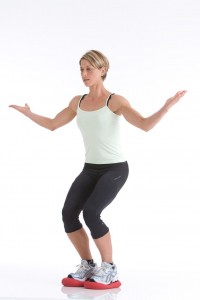by Dr. med. Gerrit Sommer
Especially during the warm time of year many people have heavy, tired legs and often swollen ankles and feet at night. But what is the reason for this and what can be done to ease these unpleasant side effects of warm summer days?
Everyday our legs’ veins run at full speed to transport the blood that is pumped from our heart into the body’s arteries, back to the heart. Approximately 7,000 litres per day! And since man spends most of the day astir, the veins have to work against gravity. In the course of this leg veins naturally suffer the most. The leg muscles’ muscular pump supports the work of the venous valves and, much like a rebound valve, the blood’s regurgitation to the blood vessels is obstructed.
But since the warm temperatures of summer make vessels expand, which may result in the venous valves no longer closing tight, transport from the veins back to the heart is often not optimally guaranteed.
If in addition to this there is a venous weakness, blood accumulates in the veins. Liquid can then escape to the surrounding tissue causing these areas to swell up.
However, apart from “thick” feet and small, harmless blemishes such as spider veins, unpleasant and far more severe illnesses can develop in the long run. Varicose, inflamed veins or even dangerous thromboses (thrombus inside the vein).
According to the Deutsche Venen-Liga e.V. (German Association of Vein Disorders) every fifth woman and every sixth man in Germany suffers from a chronic venous disease. In the event of a thrombosis of the leg veins there is a risk of the thrombus moving to the lungs, which may cause what is known as pulmonary embolism. According to the German Lung Foundation, every year 20,000 to 30,000 people die from pulmonary embolism.
So what can we do to fight swollen legs or prevent them in advance?
Often the solution is “exercise”!
The good news is that venous disorders are treatable and can be reduced and prevented through a lot of exercise and strengthening of leg muscles.
Activating the “ muscular pump”
- Walking and cycling do your veins good! Consistent and steady strain of the calf muscles results in an improved reflux of venous blood from the legs. This is also called muscular pump. Concurrently, the leg muscles are invigorated and strengthened.
- Swimming: the medium water makes this an excellent sport for veins. Through its increased density the external water pressure functions as a kind of “surgical stocking” for the legs. The external pressure supports the venous pressure (created by the venous valves) and facilitates the blood’s reflux to the heart. Furthermore, the hydrostatic lift of the water reduces body weight and relieves strain on the joints, and with that the musculoskeletal system.
- Specific activation of the “muscular pump” in vein training through load on the calf muscles. When walking or tapping one’s feet blood in the veins is pumped towards the heart. With the Senso vein trainer from TOGU this can be achieved brilliantly and with minimum space requirement. In the smallest spaces and, due to its size always close at hand, it allows you to ginger up your legs and activate their muscular pump at home, when travelling (on a coach or plane) or even at the office.







